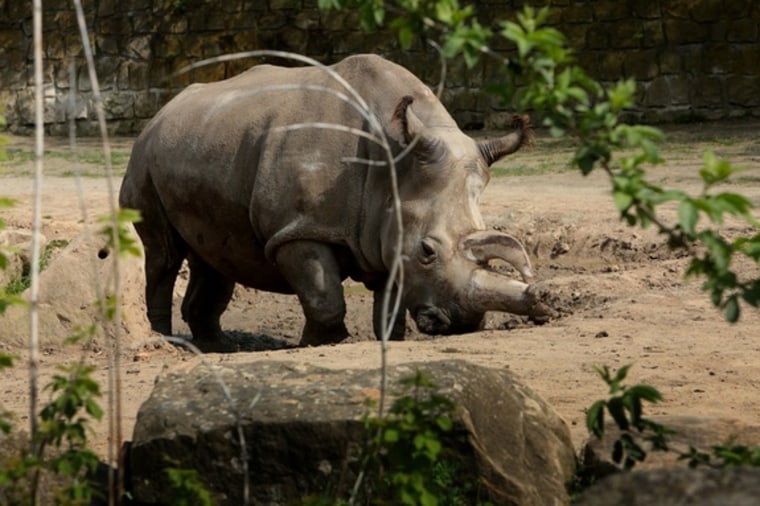One of the last five northern white rhinoceroses in the world has died.
Nabiré, a 31-year-old female northern white rhino, died of a ruptured cyst, authorities at the Dv?r Králové Zoo in the Czech Republic announced Tuesday (July 28). Nabiré's death leaves only three females of this subspecies alive. One male, Sudan, survives on a reserve in Kenya.
Northern white rhinos (Ceratotherium simum cottoni) have been on the brink of extinction for years because of poaching and habitat loss. According to Ol Pejeta Conservancy, home to Sudan and two of the remaining female northern whites, there were only a few dozen of the animals living in the Democratic Republic of the Congo in the early 2000s. The remaining four wild survivors were last seen in 2007 and are presumed dead. [In Photos: The Last Surviving Northern White Rhinos]

Now, the only northern whites left behind are Sudan, 42, and three females. Najin and Fatu live with Sudan in Kenya but are not capable of carrying babies — Najin because of her age and Fatu because of a uterine condition. The San Diego Zoo is home to Nola, now the only female surviving outside of Africa. She, too, is beyond reproductive age.
Related: Wildlife Poaching: 4 Reasons Why You Should Care About the Issue
Though more female rhinos than males survive, it's actually eggs that are in short supply, researchers told Live Science in June. Northern white rhinos ovulate only one egg at a time every 30 days or so, which makes collecting mature eggs a slow process. Immature eggs can be harvested from the ovaries, but researchers have to develop techniques to mature those eggs in the lab.
Scientists also have to develop IVF procedures that work on rhinos, which has never been done before.
"Every species requires different culture conditions, and that's because the actual conditions in the uterus in the animal are different," said Barbara Durrant, director of reproductive physiology at the San Diego Zoo Institute for Conservation Research.
This is a condensed version o a report from Live Science. Read the full report. Follow Stephanie Pappas on Twitter and Google+. Follow us @livescience, Facebook & Google+.
